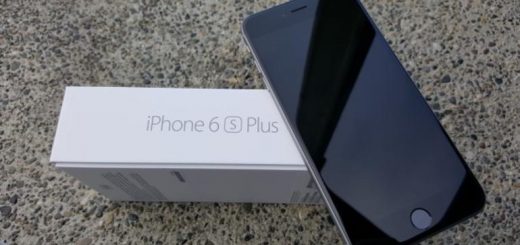Causes and solutions for frozen or unresponsive Samsung phones
Great phones & tablets can encounter bugs that can freeze the system, Android device may freeze due to temporary system slow down, Incompatible or poorly-coded app, overheating, slow performance & hardware malfunction, Like most Android problems, there’s no direct way to know what causes Samsung phone to freeze or become unresponsive, You’ll need to do a series of troubleshooting steps in order to both narrow down the factors & work out a solution.
Solutions of unresponsive Samsung Phones
If your Galaxy phone is freezing or crashing from time to time, it can be extremely frustrating, there are some troubleshooting steps to try that can help resolve your issue without having to send your phone to the service, By simply rebooting/ restarting your phone or updating your software which are a few things you can try to resolve your issue, If your device is still not responding try the following instructions:
Force a reboot on the phone
One of the popular reasons why an Android device is unresponsive is a temporary bug, Such a bug can occur for any reason, If you find your Samsung phone suddenly becoming frozen, forcing it to reboot must be the first troubleshooting step that you want to try, In older Samsung Galaxy devices with removable battery packs, disconnecting the battery is usually enough to fix a frozen system.
You should ensure your Galaxy device has a sufficient amount of battery power if you try to reboot your phone with a critical amount of charge, it may not turn on after the reboot, you can press and hold the Volume down key and Power key simultaneously for 7 seconds to force restart your mobile device, Your device will restart and display the Samsung logo.
If the Galaxy phone has a non-removable battery, you have to simulate the effects of having disconnected the battery by pressing and holding the Power button and the Volume button down at the same time for more than 7 seconds, This will force the device to restart it as if you’ve removed the battery and reinserted it.
Clear cache partition
Samsung Galaxy devices may encounter lag or freezing issues when its system cache is corrupted, To keep the system cache on your Samsung phone in top shape, make sure to regularly clear the cache partition, Doing it once every few months should be fine, Wiping the cache partition after a system update is also recommended to lessen the chances of this cache from getting outdated.
To do it: Power off the device, You have to press & hold the Power key, Home key & Up Volume key at the same time, you should release all of the keys when the Android image appears, you should press the Down Volume key to select Wipe cache partition, you can press the Power key, Once Cache wipe complete appears, you can press the Power key to select Reboot system now, The device will restart when the wipe is finished.
Update Software Version
System updates can bring improvements that could fix your issue, To check if there is a software update available on your Galaxy phone launch your Settings > Software update > Download and install > Update Now, You should connect to a stable Wi-Fi network before downloading a new software update, Downloading via mobile networks may result in additional charges, you must ensure that your Mobile device comes with enough storage space before performing the Software Update.
Checking Device Care
When you have a limited amount of storage on your Galaxy device this could slow down your phone, you can try clearing up space or memory within your Device Care settings, You can Launch your Settings > tap on Device Care, You can select Storage, you can tap on Clean now, Once complete, head back to the Device Care page to select Memory, tap cleared, you can select Memory, Tap on the Clean Now button.
Apps Crashing
When a particular application is causing your Galaxy device to become unresponsive or freeze, you may need to try clearing the app cache and data within your Settings as well as making sure you are running on the latest app version, To Clear App Cache & Data, you can launch your Settings, Select Apps, Select the Crashing App, Tap Storage, Touch on Clear Cache & Clear Data.
Not all apps are created equal, While the majority of Android apps are fine, some may not be, so, A few may cause problems with other apps or with Android, To see if an app is interfering with the Android Operating System, put the phone on Safe Mode and observe it for some time.
If you want to restart to safe mode, you should turn the device off, you can press & hold the Power key, When Samsung appears on the screen, release the Power key, Immediately after releasing the Power key, you have to press & hold the Volume down key, you can continue to hold the Volume down key until the device finishes restarting, you should release the Volume down key when you see Safe Mode on the device.
When the phone has booted to safe mode successfully, all downloaded apps will be suspended, so, only apps that came with the operating system will be allowed to run, So, if your Galaxy works fine on safe mode (make sure that you use it for a few hours) but becomes problematic again once you return it to normal mode, that’s a clear sign of a bad app issue, Use the method of elimination to identify which one is problematic.
This is what you must do: Boot to safe mode, Check for the problem, When you’ve confirmed that the third-party app is to blame, you can start uninstalling apps individually, you should begin with the most recent ones you added, After you uninstall an app, you can restart the phone to normal mode and check for the problem.
Apps can become a problem for a number of reasons but one of the most common causes is due to a disabled default app or service, To do a certain task, most apps depend on default Samsung or Android apps, If a necessary default app has been disabled, third-party apps that might need it may not work properly, such a situation can lead to problems.
To ensure that all default apps are enabled, you should reset your app preferences with these steps: Open Settings app, Tap Apps, Tap More settings (three-dot) icon at the upper right and Tap Reset app preferences.
Back up and Factory Reset
The Factory Data Reset is a last resort if the above steps haven’t resolved your issue, If you choose to perform a Factory Data Reset, it is recommended to back up your content prior to the reset as all your personal data and downloaded apps will be removed, Once you have completed your reset, you will then able to restore your personal data and apps back onto the device and continue to use as normal.
Reset all settings
Another good thing to do in this case is to return the software settings of the device to their defaults without doing a factory reset, This is usually effective when dealing with issues due to some misconfiguration, From the Home screen, swipe up on an empty spot to open the Apps tray, Tap Settings > General M
Devices stuck in Boot Loop
When your Samsung device powers on, but won’t load the operating system or only boots to the Samsung logo, this is a symptom of corrupted software, You’ll need to bring (or send) your device into a service center to have the operating system reinstalled to get your device working again.
Reasons for Heating issues in mobile phones & Tips to protect your Android Phone from Overheating
Mobile solutions of camera problems, slow performance, overheating & quick battery drainage
Safe Mode on Samsung Phones & How can you boot a Samsung device into Safe Mode



